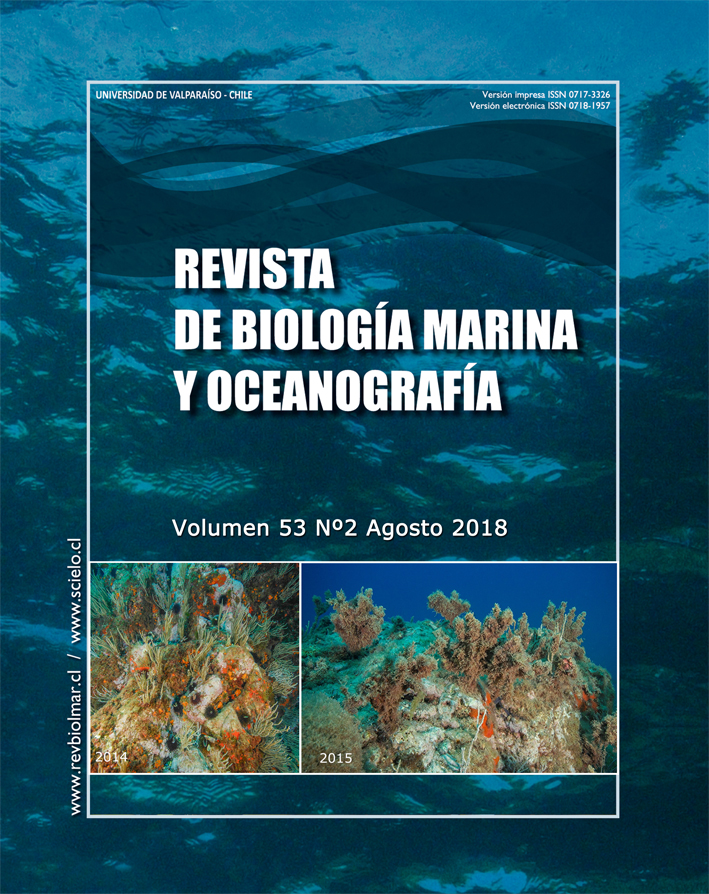Environmental variability at a marine cage culture operation in the Matanchén Bay, SE Gulf of California, Mexico
DOI:
https://doi.org/10.22370/rbmo.2018.53.2.1295Keywords:
Marine aquaculture, environmental impact, water quality, sediment qualityAbstract
This study investigated the environmental impact of offshore floating sea cages and the influence of runoff on cage fish farming in SE Gulf of California via the analysis of the physico-chemical profiles of the water column and sediments, located in SE Gulf of California, Mexico. Water and sediment samples were analyzed for physico-chemical parameters. In general, nitrates showed the highest concentrations of nutrients in the potential impact station (1.92 mg L-1). The results displayed temporal variations in the NH4 +, NO3-, and PO43- in the water column as well as variations in the clay and organic matter in the sediment. The observed trends of these parameters were toward higher concentration in the potential impact and control stations.Downloads
Download data is not yet available.
Downloads
Published
2018-08-30
How to Cite
Arámbul, E., Castillo-Vargasmachuca, S. G., Ponce-Palafox, J. T., Páez-Osuna, F., Arredondo-Figueroa, J. L., & Esparza-Leal, H. M. (2018). Environmental variability at a marine cage culture operation in the Matanchén Bay, SE Gulf of California, Mexico. Revista De Biología Marina yOceanografía, 53(2), 223–235. https://doi.org/10.22370/rbmo.2018.53.2.1295
Issue
Section
Article
License
• Los autores que publican en la RBMO transfieren sus derechos de publicación a la Universidad de Valparaíso, conservando los derechos de propiedad intelectual para difundir ampliamente el artículo y la revista en cualquier formato.
• La RBMO autoriza el uso de figuras, tablas y extractos breves de su colección de manuscritos, en trabajos científicos y educacionales, siempre que se incluya la fuente de información.





